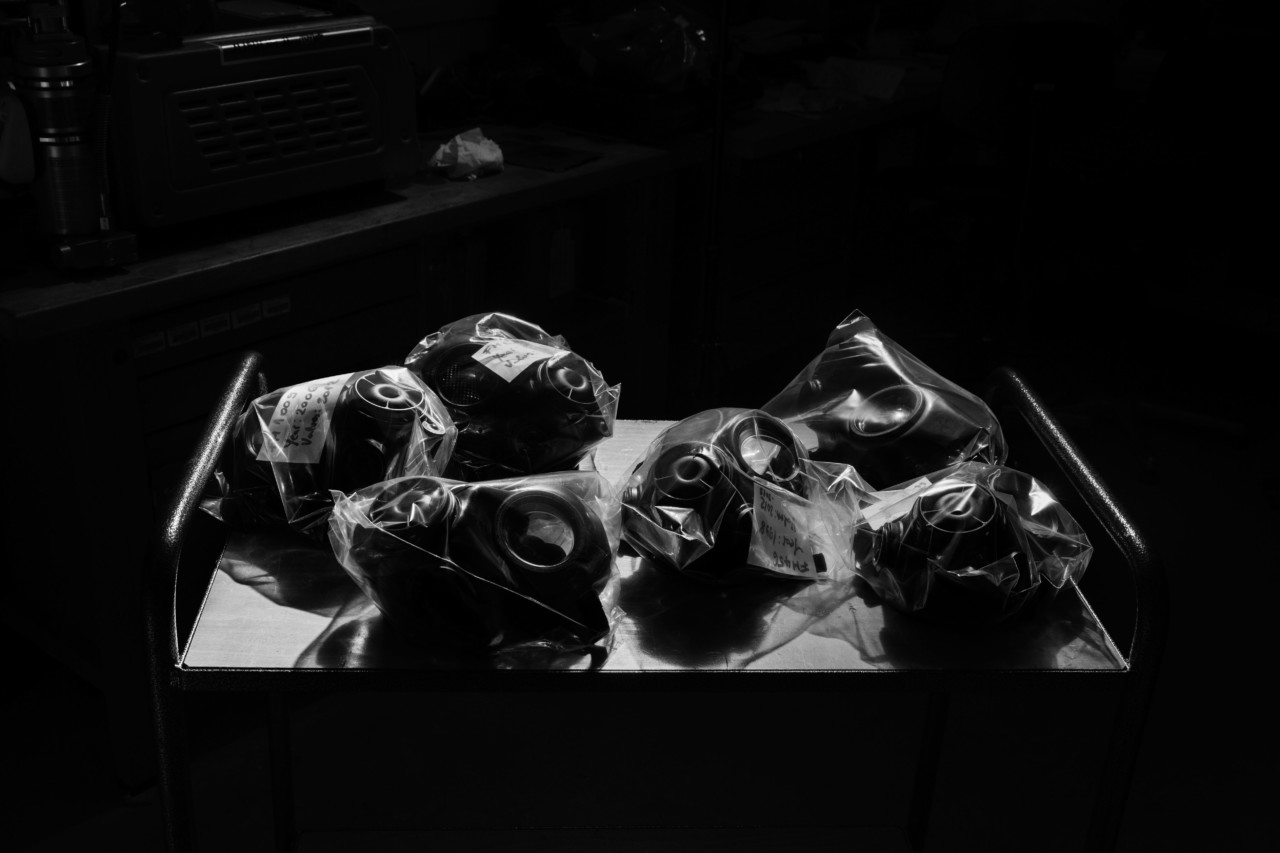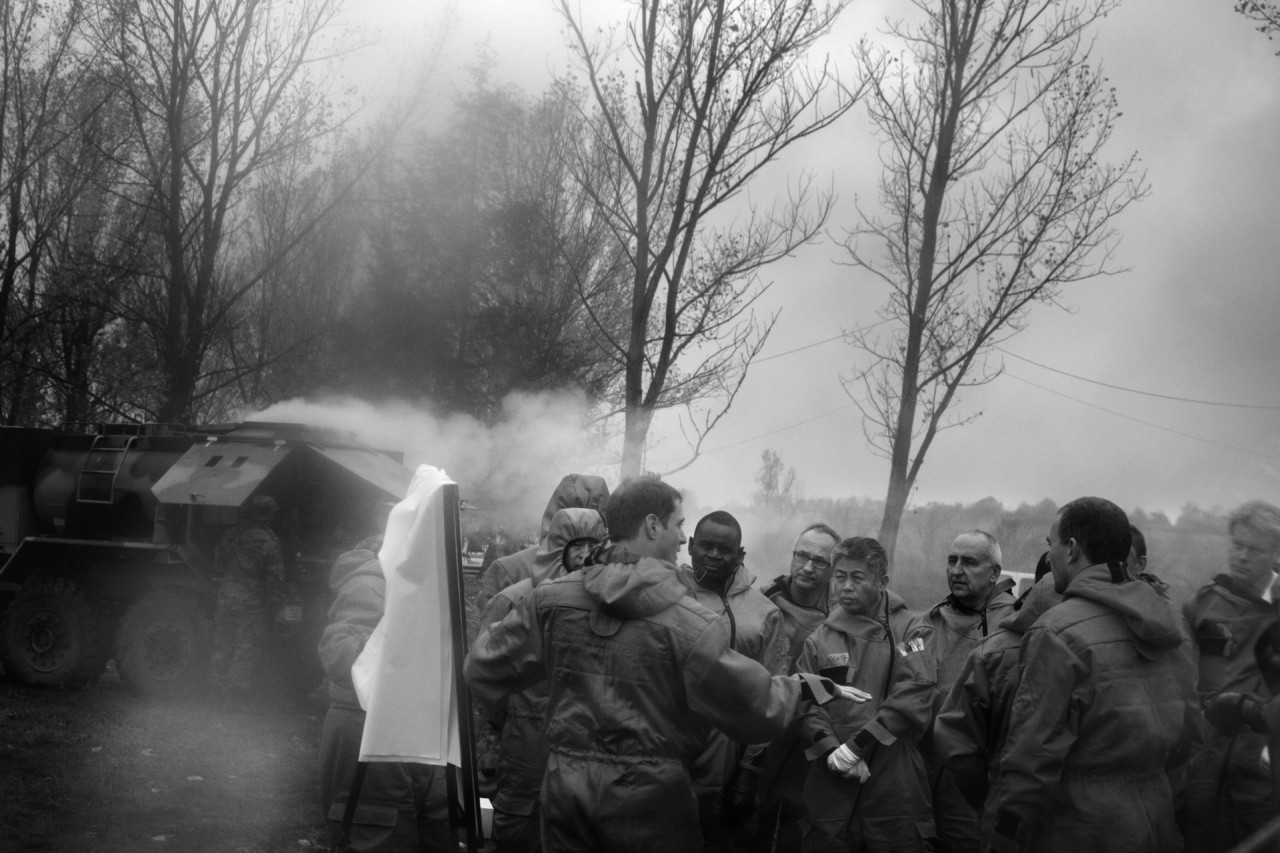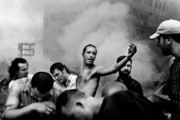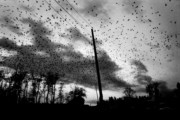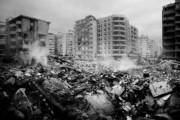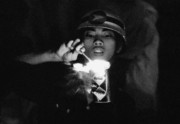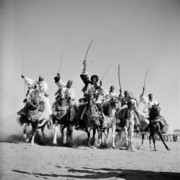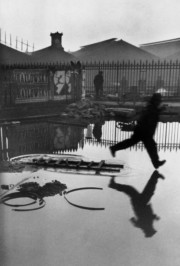Nobel Peace Prize Exhibition 2013: Combating Chemical Weapons
A rare insight into how the OPCW monitor, identify and destroy chemical weapons
In the ninth consecutive Nobel Peace Prize Exhibition at the Nobel Peace Center in Oslo, Norway, the audience got to experience the work of the Organisation for the Prohibition of Chemical Weapons (OPCW) through an exhibition by world renowned photographer Paolo Pellegrin.
Pellegrin followed the inspectors closely in the weeks after it was announced that OPCW was awarded the 2013 Nobel Peace Prize. With American war correspondent and writer Scott Anderson’s short texts, Pellegrin’s graphic and strong black and white images provided a rare insight into the daily lives of the weapon inspectors.
"Pellegrin had a unique access to document the sometimes hazardous work of the OPCW, and a photographer of his caliber gave the Nobel Peace Prize Exhibition a genuine power "
- Bente Erichsen, Executive Director of the Nobel Peace Center
The images in the exhibition Combating Chemical Weapons are taken in Libya, the Netherlands, Belgium and Serbia, and documents OPCW’s work abolishing chemical weapons of today and from WWI.
Very few have been allowed insight into the daily work of the weapon inspectors. In this exhibition, visitors could see and experience some of the hazardous work themselves.
The making of the official Nobel Peace Prize Exhibition is an annual occurrence that spans a mere eight weeks, from when the Chair of the Norwegian Nobel Committee announces the new Peace Prize laureate, to when the exhibition is opened by the OPCW Director-General at the Nobel Peace Center in Oslo in December.
Combating Chemical Weapons was the ninth annual Nobel Peace Prize Exhibition.


